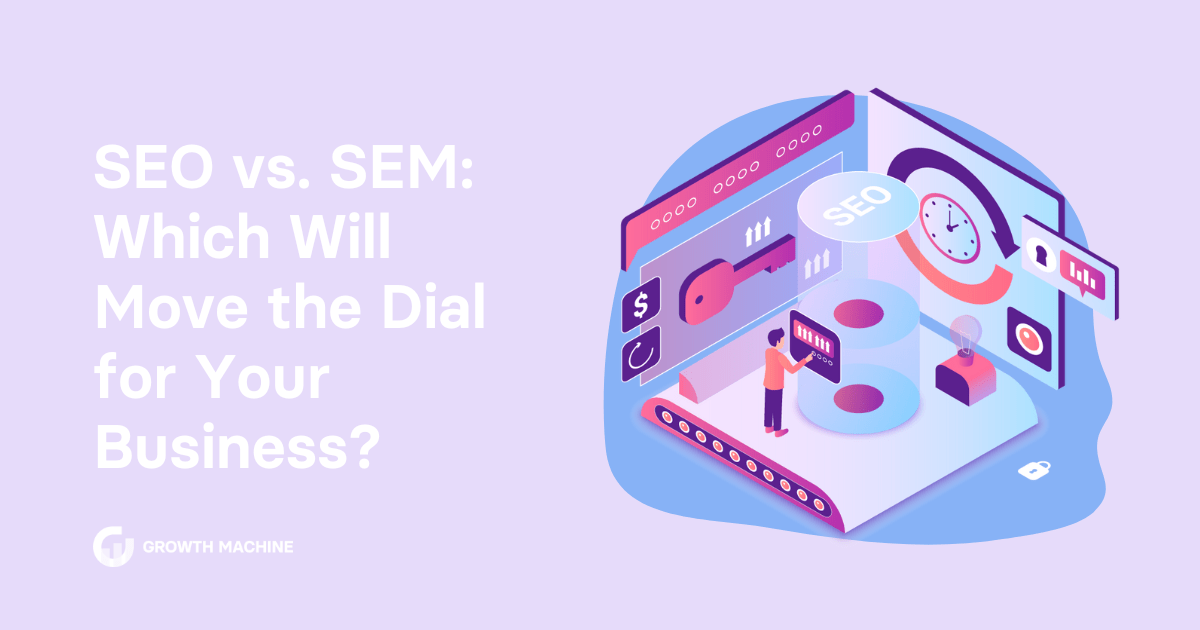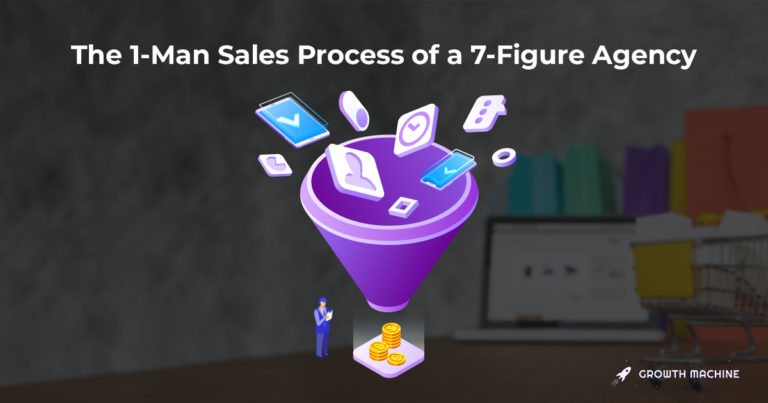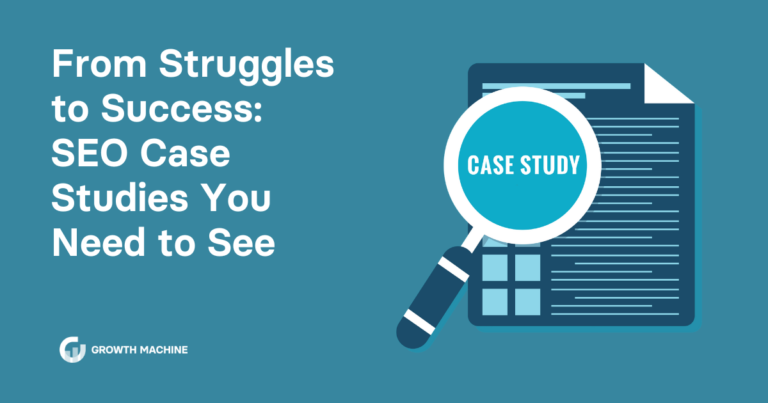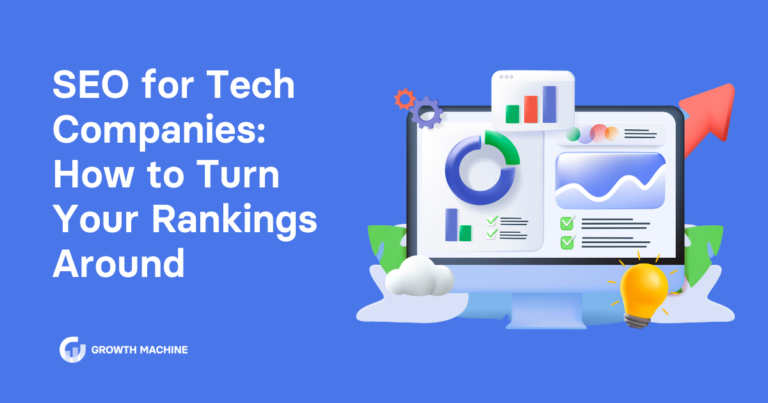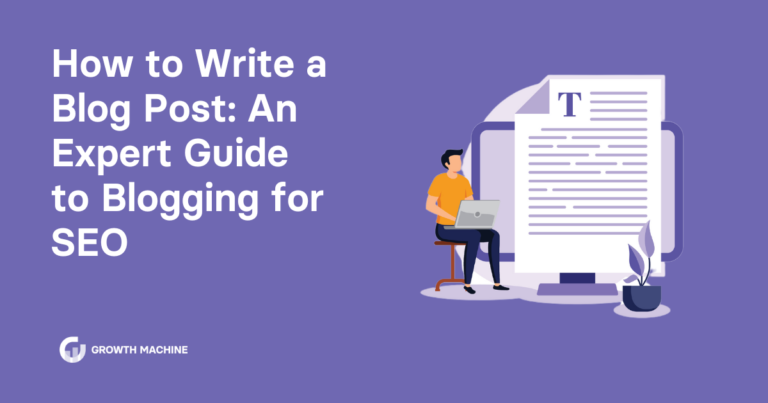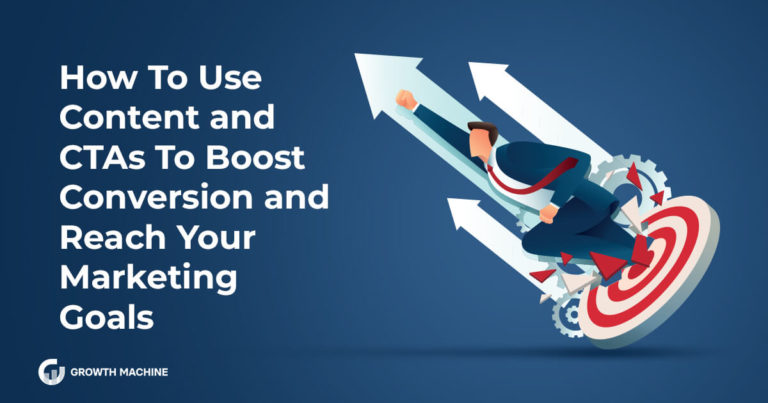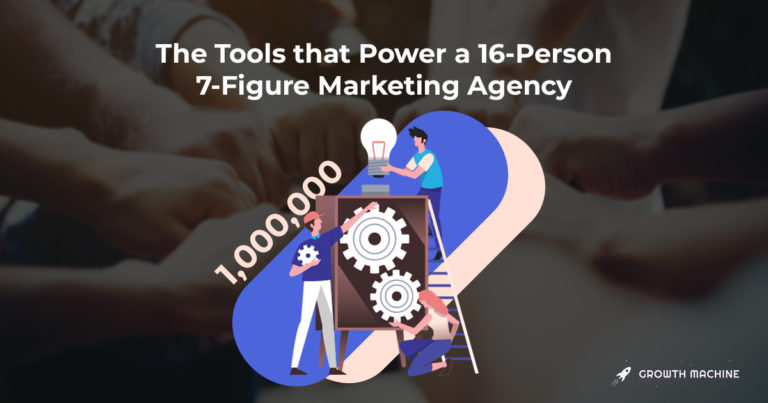SEO vs. SEM: Which Will Move the Dial for Your Business?
Search engine optimization (SEO) and search engine marketing (SEM) are two digital marketing strategies that are often used interchangeably, though they’re very different strategies.
If you find yourself confused about the differences between SEO vs. SEM, you’re not alone. While SEO and SEM may seem similar, there are key differences you need to understand in order to determine the best marketing strategy for your business. In this article, we’ll break down SEO vs. SEM in detail to help you determine which efforts are best for your business’ short- and long-term marketing goals.
What Are SEO and SEM?
SEO is an organic (not paid) marketing strategy in which a website is optimized to improve visibility on search engine results pages (SERPs). These strategies include publishing relevant content, linkbuilding, and technical structure, in order to increase the site’s relevance and authority.
SEO aims to improve a website’s search ranking on SERPs like Google and increase organic traffic to a website, aiding in brand awareness and business growth.
SEM is a marketing strategy that leverages paid advertising to drive more traffic to a website by positioning it at the top of Google search results as an ad placement. SEM uses paid advertising strategies like PPC (pay-per-click), AdWords, and retargeting campaigns.
What Are the Features of SEO vs. SEM?
There are a number of specific efforts involved to implement an SEO or SEM strategy. A comprehensive plan should address the following:
Search Engine Optimization (SEO)
In SEO, key elements of a website are optimized in order to rank higher in Google SERPs for a set of relevant keywords, and drive targeted organic traffic back to the site. This strategy improves the relevance and authority of the site by optimizing the website content, earning high-quality backlinks, strategic technical configuration, providing an excellent website experience for site visitors, and more.
Google’s core updates, ranking factors, and algorithm take into account a variety of things, including:
- High-quality content (content marketing)
- Positive user experience/user-friendly pages
- Backlinks to authority sites
- And a well-structured technical configuration that allows spiders to effectively crawl and index the website
While all of this might sound complicated, understanding and implementing effective SEO strategies can transform your website into a vital sales tool and lead machine. SEO components fall into these three core components:
Content Marketing
A strong content marketing strategy is one of the most valuable pieces of your larger SEO efforts. Through strategic keyword research and effective content writing, your website can rank for thousands of targeted keywords and phrases, effectively bringing in tens of thousands (or more!) organic sessions to your website every month.
Content marketing is most commonly executed in the form of blog posts and articles, case studies, resources and guides, infographics, or similar resources that provide value to your target audience.
At Growth Machine, we’ve helped dozens of brands across a variety of industries successfully generate hundreds of qualified leads by driving thousands of potential customers to their website, thanks to strategic content marketing.
For instance, this brand added 120,000 organic sessions to their website in just 10 months through an effective content marketing strategy.
On-Page SEO
On-page SEO is exactly what it sounds like — optimizing the visible elements of a web page to improve the page’s searchability, as well as publishing keyword-optimized content that’s relevant to the brand. Your site’s regular website landing pages and content marketing blog pages should all be optimized to include these pieces of on-page SEO:
- Meta descriptions and title tags: When searching for a solution online, meta descriptions and title tags (or page titles) are often the first encounter that a prospective customer will have with your brand. Here you can give readers (and Google) a sense of what they can expect to find by clicking through to your page.
- Image optimization and alt tags: This is another opportunity for your site to provide Google with context about what is on the page.
- Header tags: Header tags, including the H1 tag, help define a page’s topic and can be used to indicate the importance of a page to search engines. By breaking up the content on the page, they also help make it easier for readers to scan and understand the text.
- URL optimization: This can affect how your website is crawled and indexed by search engines. URLs that are easy to read and understand provide a better user experience, and can help improve your website’s ranking in search results.
- Internal linking: This helps Google understand the hierarchy of your website by providing more link value to important pages and posts — often referred to as priority links. Internal linking also helps improve click-through rates, as users are more likely to click on links that are relevant to the topic they’re searching for, and keeps your visitors on your website longer — a signal of relevance and authority for Google.

Off-Page SEO
Off-page SEO refers to any efforts to optimize a website that occurs off of the website itself. Like on-page SEO, the purpose of this practice is still to rank higher in search engine results pages (SERPs) like Google, Yahoo, and Bing, however off-page SEO specifically aims to increase a website’s authority, which is measured by factors like the number of high-quality backlinks.
Backlinks are links from other websites that point back to your domain or a specific URL on your site. When these links are from high-authority websites, they signal to search engines that your site is trustworthy, helping the website rank higher in SERPs.
Improving your off-page SEO requires a strong backlink profile, which can be acquired in a handful of ways. A strategic linkbuilding project through an SEO agency is typically the quickest way to build authority, however it can be done organically too. Through social media marketing and outreach to industry partners, other websites and thought leaders, you can build your backlink profile.
Technical SEO
Technical SEO is the practice of optimizing the technical function and architecture of a website to provide the best site organization and user experience, which positively impacts SEO performance. These site optimizations include improvements like site speed and ensuring web pages adhere to Google’s Core Web Vitals metrics and other standard practices to offer searchers the best experience.
Technical SEO includes optimizing the website’s CMS, coding, scripts, page load time and site speed, URL structure, XML sitemaps, robots.txt, and mobile-friendliness. It also aims to eliminate duplicate content and implement schema or structured data.
By improving these technical components, search engine crawlers can more easily discover, navigate, and index the right pages on the website.
Implementing technical SEO improvements is critical to your website’s rank in SERPs, and a core contributor to increased website traffic and conversions.
If the process of improving your site’s technical SEO feels daunting, consider hiring an SEO agency to run a technical audit on your site and provide you with a definitive list of the improvements needed.
If a DIY audit is more your speed, use a tool like Screaming Frog SEO Spider to help perform the audit yourself.
Search Engine Marketing (SEM)
While SEO efforts are focused specifically on organic measures, search engine marketing (SEM) uses paid advertising to get your business in front of more people. SEM includes paid strategies such as PPC/CPC, AdWords, retargeting, geotargeting, mobile search advertising, and more.
Paid ads are placed on Google search results pages as sponsored listings, and they can target specific audiences based on their location, interests, and other factors.
SEM strategies can be an effective way to reach more potential customers and boost your business’ visibility online in a short period of time. However, it’s important to remember that SEM campaigns aren’t a “set it and forget it” strategy; you’ll need to continually monitor your ad campaigns and make changes as necessary to ensure you’re getting more bang for your buck.
- PPC/CPC: Pay-per-click is a type of SEM that allows you to place ads at the top or bottom of a search engine results page, or SERP. These ads are labeled as “sponsored” and the advertiser is charged the agreed-upon price, or cost-per-click, each time the sponsored ad is clicked on.
- AdWords: This is an SEM feature that allows businesses to place ads on Google’s SERPs and its partner sites. The ads are displayed based on the keywords and phrases you choose to target, and the user’s geographical location, search history, and other factors. AdWords allows your business to control how much it spends on advertising campaigns, how long the ads run, and which websites the ads appear on.
- Retargeting/remarketing: This enables you to reach out to people who have already interacted with your website. It involves displaying targeted ads to users who’ve previously visited your site, searched for your products, or shown an interest in what you offer. This type of advertising can be particularly effective because it allows you to target users who are already familiar with your brand.
- Geotargeting: This SEM strategy allows brands to deliver ads to customers based on their location. Brands can target people within a certain radius or based on their behavior or demographics. This allows brands to focus their advertising efforts on specific areas or groups of people who are more likely to be interested in their product or service.
- Mobile search advertising: This SEM strategy allows you to place ads on mobile devices, such as smartphones and tablets, targeting people who are searching for keywords related to your business on these devices.

Key Differences Between SEO and SEM
There are five factors to consider in determining whether SEO vs. SEM is the right strategy for your business: investment and cost, how long it takes to see results, keyword difficulty and industry saturation, testing and targeting, and longevity and momentum.
Investment and ROI
SEO and SEM have different implementation costs, which affect the ROI. The most significant difference is that SEM requires an ad budget; SEO does not.
A PPC ads strategy in SEM may cost you tens of thousands of dollars, or more in industries that are highly competitive and have a higher average cost-per-click (CPC). In addition to an ad budget, you’ll need to hire either an in-house Google ads expert or an agency to implement your PPC strategy.
While you don’t need to set aside a budget for ad placements with SEO, it doesn’t mean it’s entirely free. SEO also requires resources — an in-house SEO specialist, content writer, or agency — to roll out your SEO strategy. Additionally, you may need to subscribe to tools to help with keyword research and other techniques, although your SEO strategy can succeed without them.
You may get quick wins from SEM, as you can get your desired conversions (website traffic, sign-ups, purchases) almost instantly. But once the ad campaign ends, your content disappears from the search results. The ads don’t continue to serve future customers like content marketing does, meaning you’ll need to continue running ad campaigns in order to keep a presence on Google — so SEM can be more expensive than SEO in the long run.
How Long It Takes to See the Results
SEM is a short-term strategy focusing on paid campaigns such as Google AdWords to drive traffic to your website. SEM produces immediate results by pushing your website to the top of the search engine results pages.
While we do see “quick wins” for clients from time to time, in general, SEO is a long game. It can take months to reap the benefits of a content marketing strategy and see your site ranking on the coveted page 1 of Google. SEO focuses on optimizing your website, publishing new content for a set of targeted keywords, and building backlinks over time to rank higher in organic search results.
While it may take longer to reach your goals with SEO, you can also expect your efforts to last much longer than an SEM campaign. Once you’ve successfully earned page 1 rankings, you can expect to continue to rank for those keywords for an extended period of time.
Keyword rankings don’t disappear after the budget runs out in the same way that Google ads do. While you’ll likely have to optimize your content over time to stay relevant and rank against competitor articles, optimizing can be quick (and free!) upkeep, compared to running another ad campaign.
This article takes a deeper dive into how long it takes to see results on Google.
Keyword Difficulty and Industry Saturation
Whether you go the SEM or SEO route in your marketing strategy, the use of keywords will play a significant role in your efforts.
In SEO, the success of your strategy depends on your ability to find viable keywords to target with your content marketing efforts. The goal of your keyword research is to find relevant keywords your target audience is searching for that your site can reasonably rank for within an attainable difficulty threshold.
However, the competitiveness of some industries and saturation of SEO content may leave businesses and brands with a low domain authority less opportunities to rank on relevant keywords with both a moderate to high monthly search volume and low difficulty.
In such cases, all is not necessarily lost, but a really creative keyword strategy is imperative. At Growth Machine, we’ve navigated scenarios like this for a handful of clients in various industries and still saw successful results.
In the same way you leverage relevant keywords for SEO, SEM uses keywords to get websites in front of more people. With SEM, you’re essentially paying for ads appearing at the top of search engines when someone searches for those keywords.
With SEM, ads can harness immediate results on a targeted keyword that a business is unlikely to rank for organically. But a Google ad doesn’t contribute to the long-term optimization of a site, and the only way to keep your business in front of prospective customers for a certain keyword or phrase is to continue paying for that ad placement.
Testing and Hyper-Targeting
SEO is more difficult to test than SEM because it takes longer to reap results and it’s not immediately obvious what is or is not working, meaning you have to monitor your campaign for longer to see whether your strategy is effective.
With SEM, you can run different ads and keywords to see what works best for your target audience, and it’s an easier strategy to test because you can see immediate results and quickly pivot your strategy if needed.
With PPC (pay-per-click)campaigns, you can also get pretty granular when setting targeting parameters and specifying audiences.
While SEO doesn’t facilitate hyper-targeting in the same way, you can put together a content marketing strategy to target various audiences at different stages in the prospects lifecycle by taking a funnel approach to the keyword selection, content writing, and conversion goals.
Longevity and Momentum
SEM tactics rely on excellent ad copy, good quality score, and ad relevance to remain effective. You have to constantly monitor your ads and these metrics to ensure they don’t drop and become less visible and less valuable, wasting ad dollars.
Additionally, once you stop paying for PPC campaigns, your web pages will stop showing up in SERPs. Without an exponential budget, it’s impossible to keep your business in front of potential customers for the long term.
SEO may require some upkeep to maintain your search ranking, but after the initial work is done, the occasional optimization is manageable and retaining your hard-earned rankings is a realistic goal.
When done correctly and effectively, your SEO strategy will result in high-quality content that’ll remain in the search results for a much longer life cycle than ad placements, making your investment more sustainable in the long run.
How Do SEO and SEM Work Together?
For businesses with a large marketing budget, SEO and SEM can be used together to create a well-rounded digital marketing strategy — SEO as a long-term strategy for getting your website’s contents on the first page of Google search results, and SEM for driving more traffic to your website in the short term.
When your SEO efforts drive visitors to your website but don’t get your desired conversions, you can retarget the same users with search marketing campaigns on social media like Facebook and Instagram, and drive them back to your landing pages.
SEM can also give insights into your target audience’s search queries, informing your SEO strategy. If you have multiple PPC campaigns in Google AdWords, you can find specific keywords with higher click-through rates, user clicks, and conversion rates, and incorporate these keywords into your SEO content strategy.
Which Is Right for Your Business — SEO or SEM?
There’s a lot to consider when determining how to best market your business or brand. From investment to customer acquisition, and everything in between, putting together a successful marketing strategy is no small feat.
While SEO is a long-term investment that can take months to see results, it is, in most cases, a wise investment in your business. Once you see your SEO strategies take off, you can expect to see organic traffic and conversions for a sustained period.
While SEM might reap faster results, it doesn’t build upon and improve existing sites, and it doesn’t create a predictable pipeline of future organic leads.
If the best foot forward for your business is a quick win and immediate pool of prospects, SEM might be the best strategy for the short term, budget depending.
But if your brand is looking for an investment that continues to pay dividends through sustained brand awareness, a long-term pipeline, and by providing value to and earning the trust of potential customers far beyond the publishing date of an article or the duration of an ad, SEO is the way to go.
If you’re ready to see how a well-planned SEO strategy can transform your business and deliver new prospective customers to your site every month, reach out to us today.

